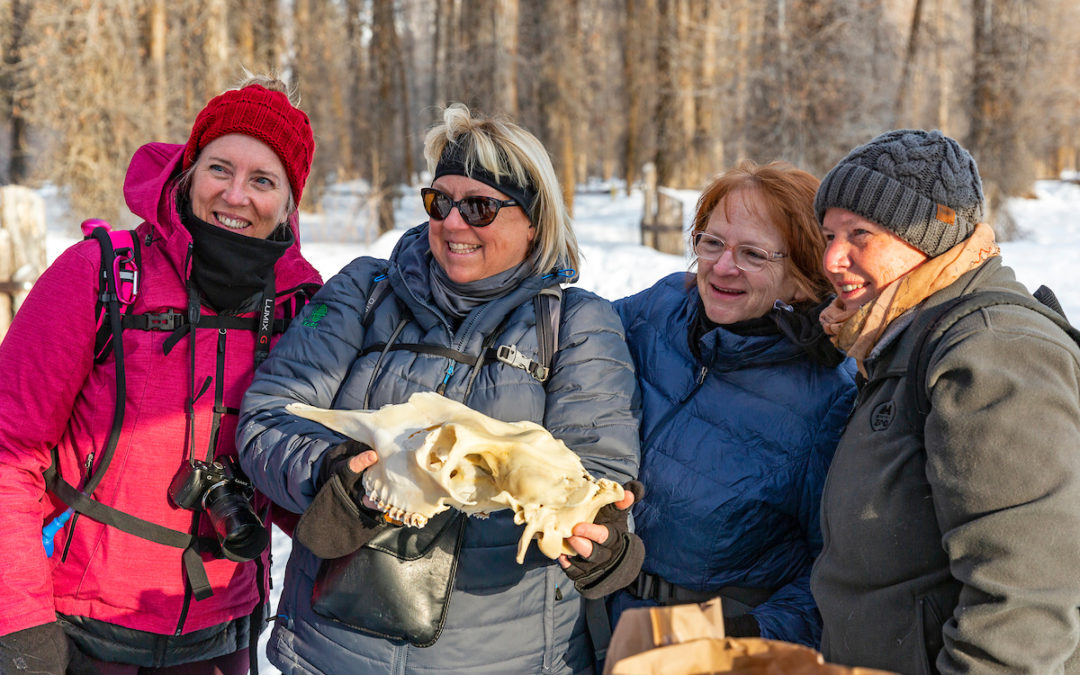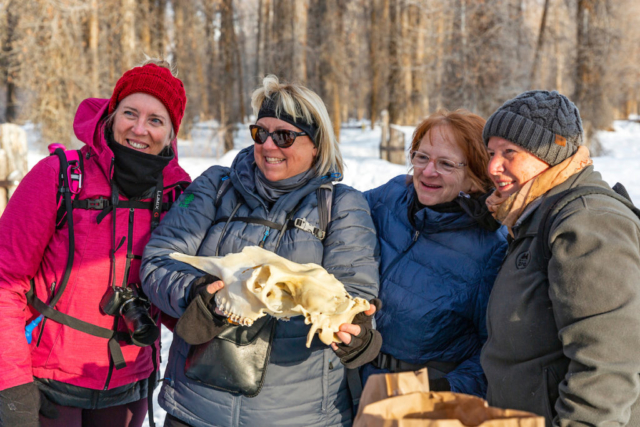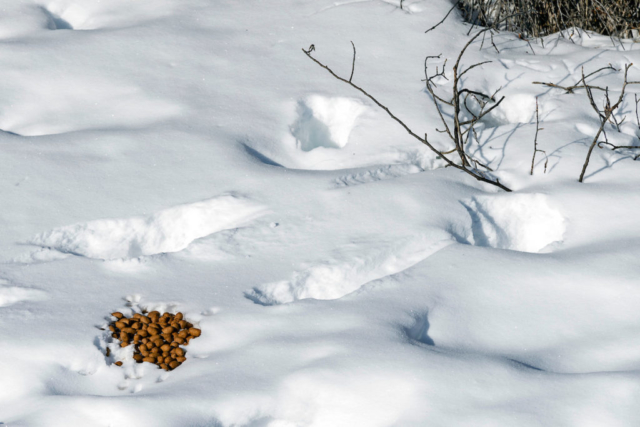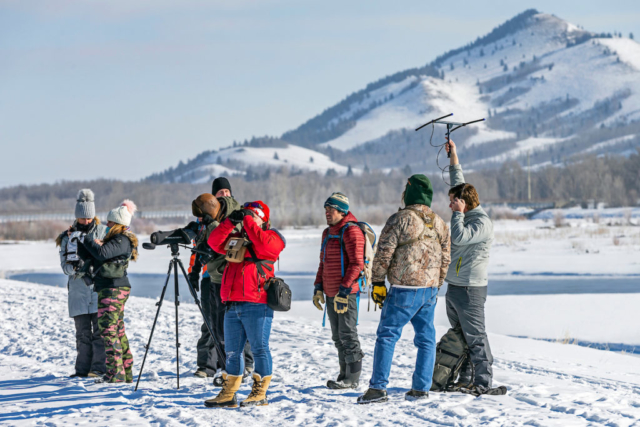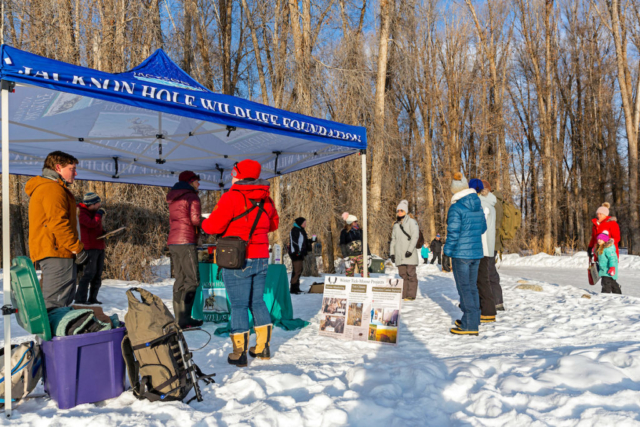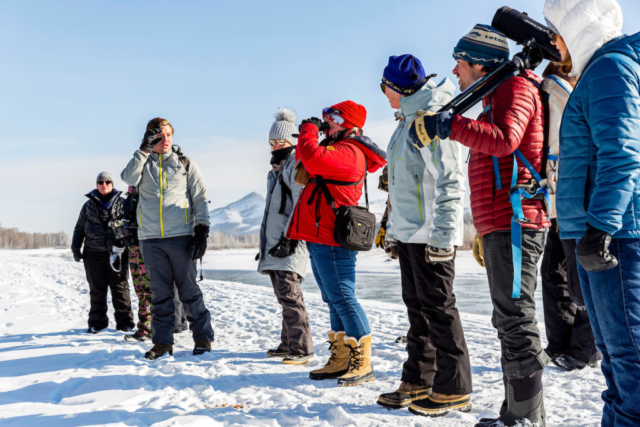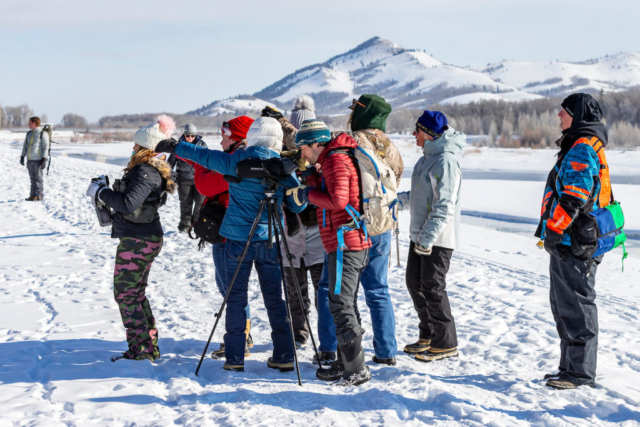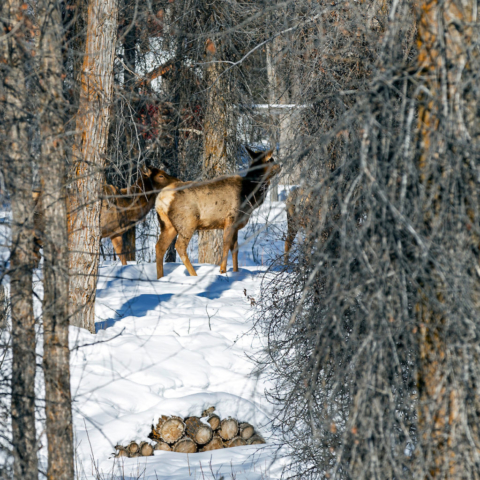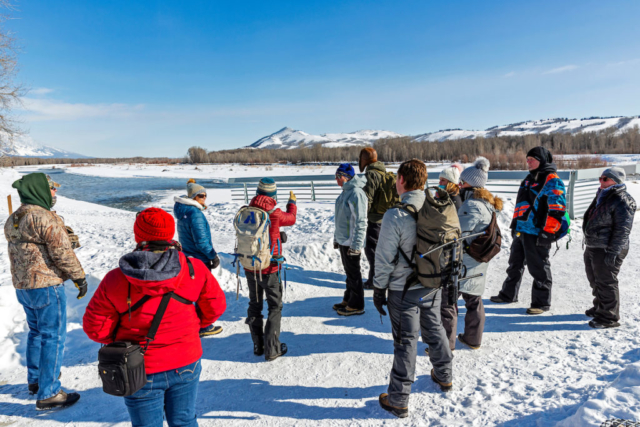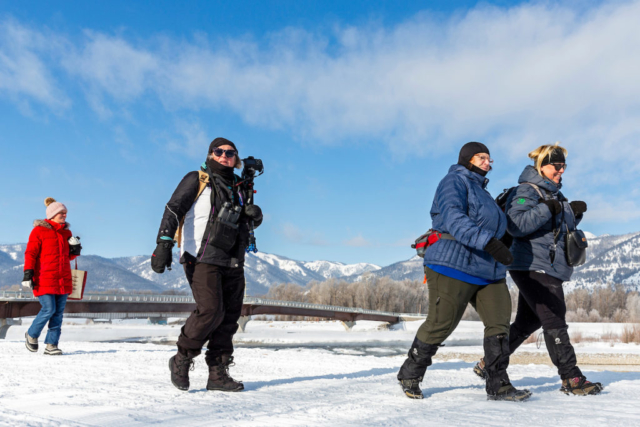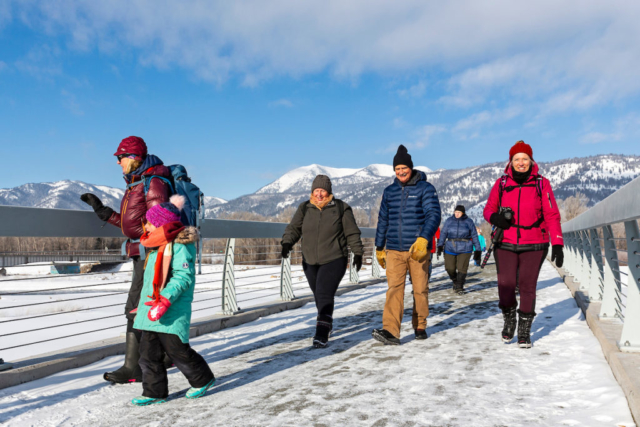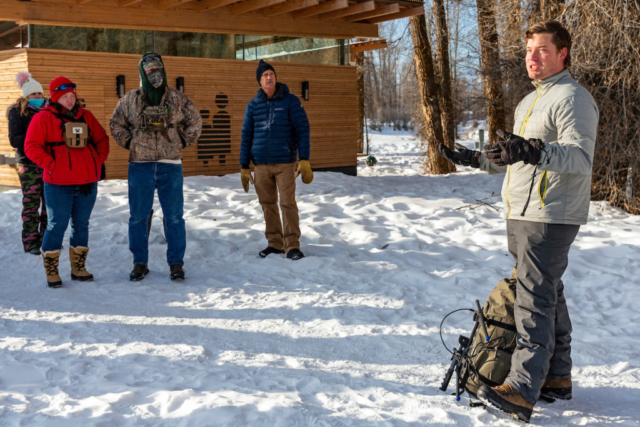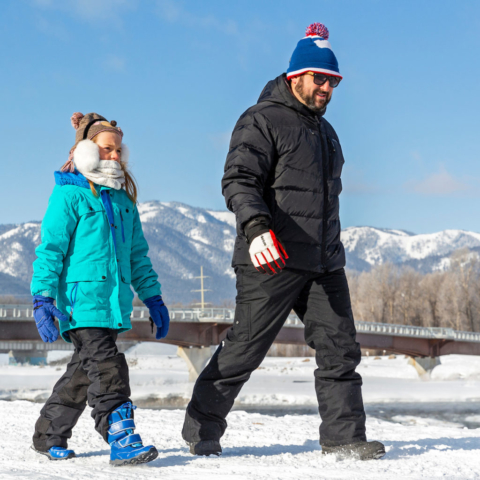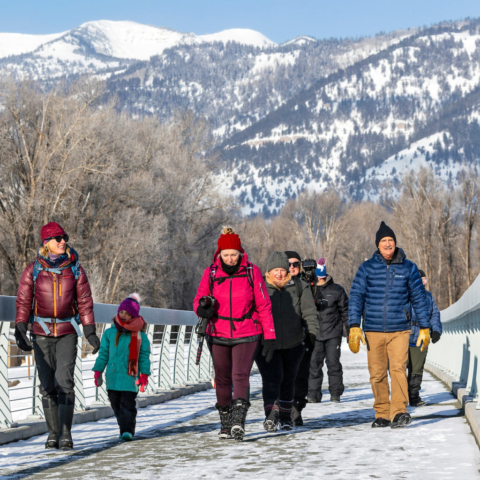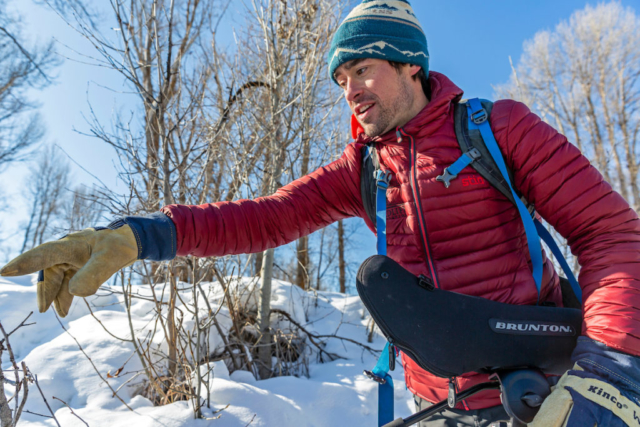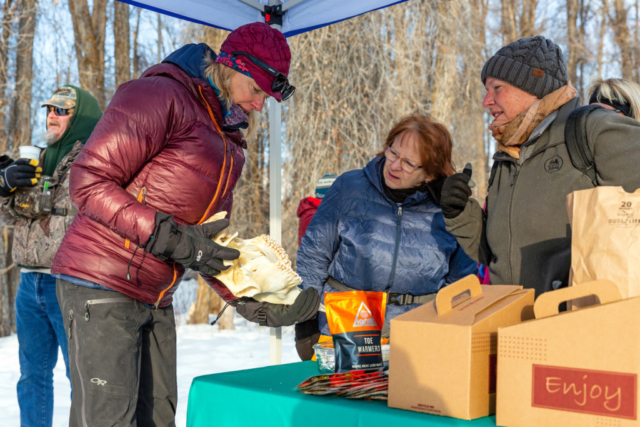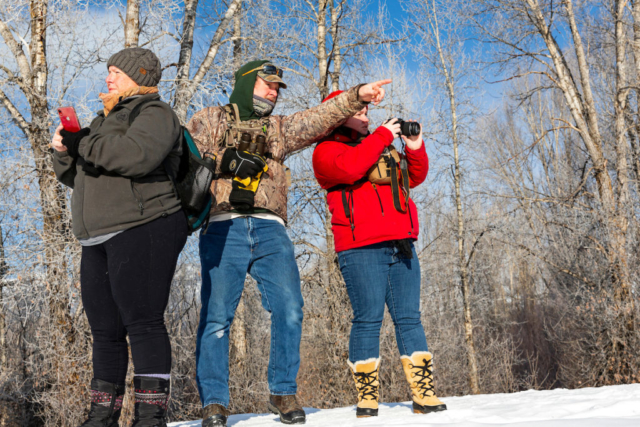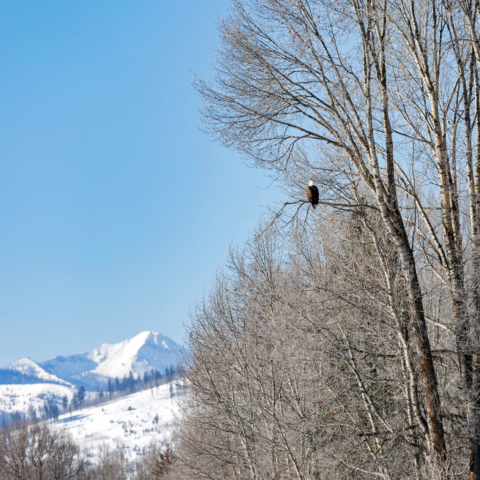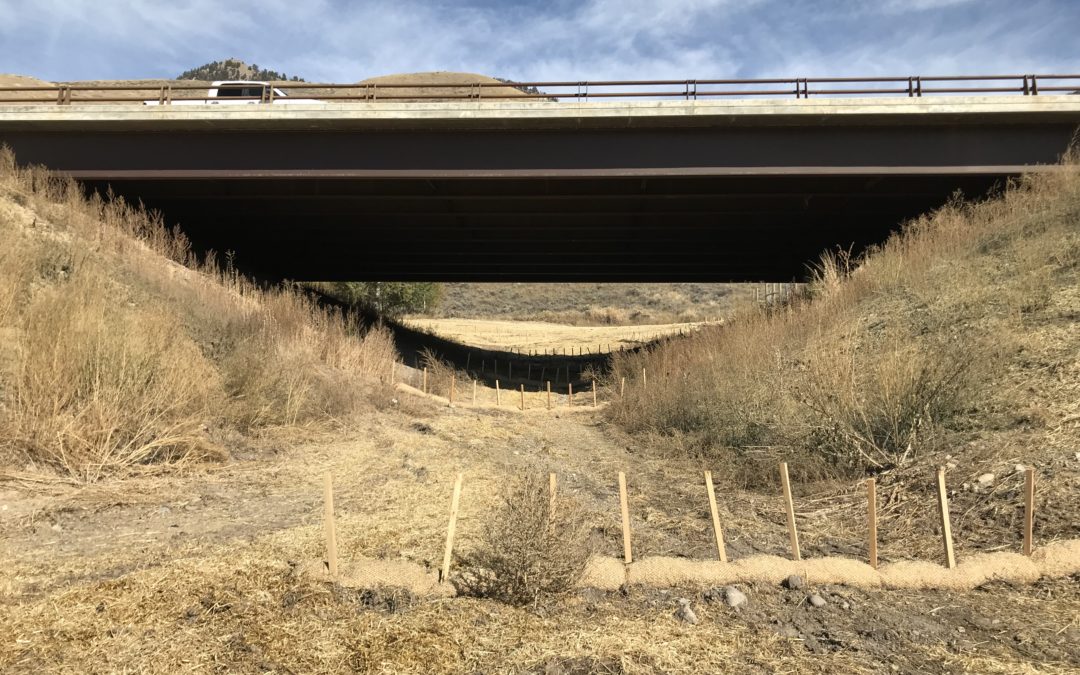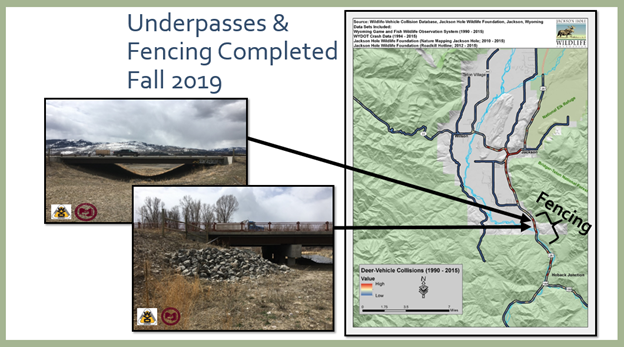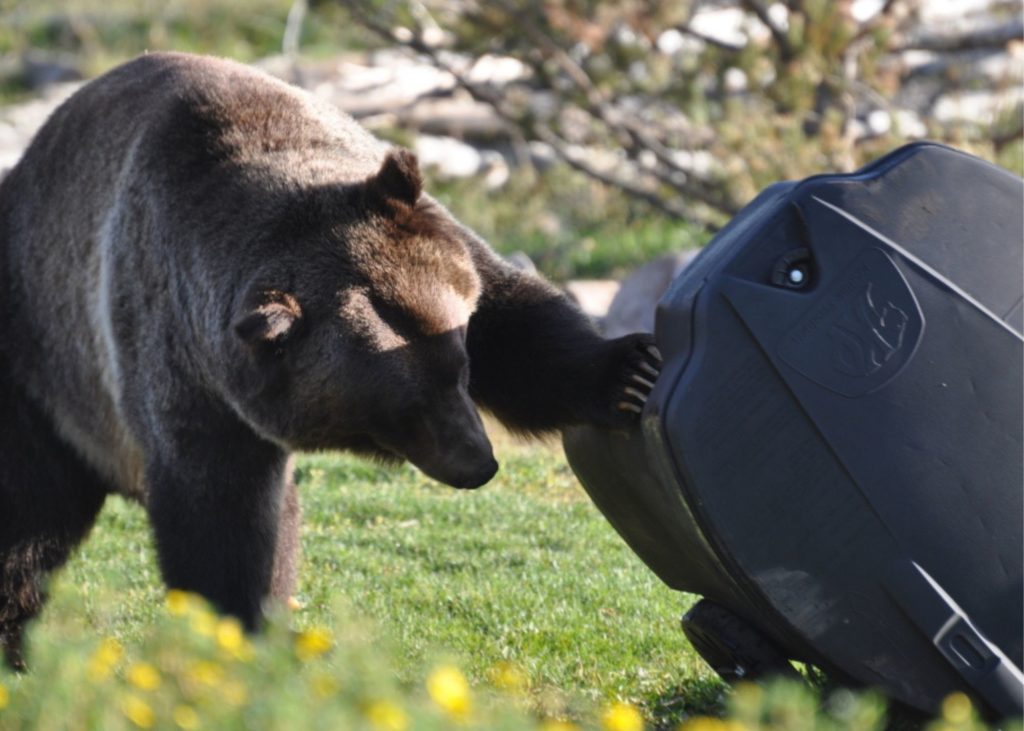
Moose Day 2022
By Frances Clark
A valiant cadre of over 95 volunteers ventured out on a frigid morning to scout for moose with great accomplishment. The latest count, still to be verified, is 94 moose. This compares well with Moose Day 2021 when 109 volunteers recorded 106 moose. Thank you intrepid surveyors, gracious landowners who granted permission to survey, and moose who turned up to be counted.
Cold

The dominant sense of the day was cold! Temperatures were gauged at -20F west of the Tetons and at the north end of the park at 7 a.m. when many of you set out to make your route. Temperatures barely made it into the single digits by noon time. (Moose don’t mind this cold.)

However, while some of you were at first daunted by the cold, you persevered, and as one skier said, “Soon we were stripping off jackets once we warmed up.” Another commented on the balancing benefit of a classic “blue bird” sky day. Morgan Graham, a veteran of all Moose Days, said this is the coldest he recalls for a Moose Day. “Blizzards yes, but not this cold!”

Participants:
Dozens of teams spread out to the north end of Grand Teton National Park by Swan Lake, south past Hoback, and east up the Gros Ventre. For the first time, eight teams ventured up the canyons on the west side of the Tetons. Your observations will help determine which areas should be added to our Moose Day Survey.
We also had long-time valley residents participate: Dornans, Ewings, Barkers, and Linns. Gene Linn’s grandchildren were keeping their eyes open for moose in Wilson and found two! These families have been advocates for wildlife for generations.

In total, you hardy Nature Mappers and other Moose Day volunteers spent 186 hours skiing, snowshoeing, walking, and snowmobiling. Other sets of volunteers drove slowly through neighborhoods in and around Jackson and Wilson peering behind buildings, across fields, and into willow thickets for another 160 hours. Total “effort” was over 350 hours in one morning!
Where were the moose?

While about half the teams were disappointed, others found moose. Almost half of the total moose were discovered in a just few areas (see map attached)
Coordinated by Ashley Eagan, the USFS team of four spent much of the day snowmobiling east up the Gros Ventre. They found 20 moose! Sarah Dewey and Carson Butler, biologists with GTNP, spent five hours finding 14 moose east of Moran (not yet mapped). These have been traditional sites for moose, likely because of large willow stands and limited disturbance.
A large team on skis and by car covered Kelly and the park roads north of town and found only a few moose. Last year this large team had 19 moose between Kelly and the rotary. Moose seemed to have moved west into the vicinity of the JH Golf and Tennis Club where a multi-modal team led by Randy Reedy scored 11 moose.

Many teams scoured smaller territories in and around Jackson and Wilson. As in past years, Wilson harbored a strong scattering of twig eaters in the lowlands with extensive willow cover. Sightings extended south down the dike and Fall Creek Road around Crescent H. Those who covered the buttes had great views but no moose, nor were any of the large ungulates seen around Hoback, Astoria Hot Springs, or Snake River Sporting club.
Other wildlife observations:
Many did not see moose, but Nature Mapped other critters. In the north of the park, skiers detected an otter slide, evidence of wolves on a carcass, a pair of bald eagles and particularly unusual a golden eagle. Fifteen bison were grazing near Kelly. Nathan Letcher spied coyotes on the Elk Refuge.

Along Fish Creek in Wilson, mergansers, mallards, barrow’s golden-eyes by the dozens and four trumpeter swans were feeding in the waters, with two whitetail deer along the shore.

Tamara Clauson spotted a ruffed grouse camouflaged under trees.

A fox was hunting within 15 feet of a loafing cow moose.
Hosted by AJ DeRosa at his tipi camp before and after his survey, Len Carlman, saw 53 Barrow’s golden-eyes in the Snake River. Len quoted AJ describing the ducks’ behavior vividly: “Teaming up in a riffle, feeding, then seamlessly aligning themselves like a well-made zipper, forming a clean bending mostly single file line as the current moved them to the bottom of the riffle.”
Throughout the region, many reported ravens, magpies, mule deer, elk, and several bald eagles—often in pairs. It is eagle nesting season. The Nortons saw a dipper on Moose Creek.

Small birds, except a few chickadees, were scant, perhaps due to the morning cold.
Other notes:
Two Teton Valley teams noted significant snowmobile tracks into canyons that yielded no moose.

Plentiful moose tracks surrounded exposed haybales indicating indirect feeding—not good for moose.

North of Wilson, a neighbor reported to the surveyors someone feeding moose, “If they want to see wildlife that much, they can look at National Geographic.”
After skiing his survey area on the Snake River Ranch, Ben Wise of WGFD was called to East Jackson where a young moose was bedded down in an open garage. Ben gently nudged it on out. It was likely there for an hour or two.

The contingent from “Hosted Moose Day”, sponsored by the JH Travel and Tourism Board and JH Wildlife Foundation, added their data to Moose Day in an area that was not one of the original survey areas. Twelve years ago, R Park was a gravel pit which prohibited access. It had been left off the maps. Now the park and surrounding cottonwoods are a regular haunt of moose. Thank you Moose Day guests for adding data that count. We will formally include this area in the future.
We had reports from friends and neighbors of moose not spotted by our diligent teams—a reminder that chance plays an important part in seeing moose! Aly Courtemanch said that all reliable sightings within the count time should be recorded, regardless of who saw them. She can then check the data for any duplicates.
As in the past, we had several volunteers state they had moose in their backyards or out their windows the day before or after Moose Day. We veterans know: moose disappear on Moose Day.

Thank you!

A moose-size thank you to all Moose Day volunteers for your time, diligence, and indeed perseverance on a frigid morning. Collectively you found and mapped dozens of moose: the goal of the day. Although some of you were understandably disappointed in not finding moose, most all of you reported enjoying the adventure of Moose Day. We are so glad!
We also appreciate the engagement of the wildlife agencies. Biologists spent their scant free time to find moose. In addition to those mentioned above, Mark Goecke of WGFD, Morgan Graham of Teton Conservation District; Linda Merigliano of USFS; and Rob Cavallaro of Idaho Fish and Game donated their time. These professionals are dedicated to the wildlife we all love. Thank you.
A very special thanks to Aly Courtemanch, biologist with WGFD, who leads this vital partnership with JH Wildlife Foundation’s Nature Mapping program. JHWF Program Director Hilary Turner worked tirelessly on details of the event, especially with the new teams and areas of Teton Valley. Without Aly and Hilary, Moose Day would not happen or matter.
Finally, we want to extend our appreciation to the landowners and HOA managers who granted permission for strangers to ski across their properties–slicing tracks into untrammeled snow, and for cars to cruise down private roads, windows cracked with binoculars peering into back-yard bushes. Permission to survey private lands is essential to a successful Moose Day.
Final numbers and maps will appear in the next Nature Mapping enews.
Thank you all for your time and care.

I truly believe the moose appreciate all you do on their behalf.
Frances Moose Day Volunteer Coordinator
Photo credits (all by Moose Day volunteers):
Moose – Sarah Dewey; 2 moose – Gigi Halloran; cold faces – Peggy Davenport; moose silhouette – Keli Lessing; blue-bird sky – Peggy Davenport; family on dike – Gene Linn; browsing moose – Keli Lessing; moose with Wilson cliffs – unknown (let us know if it is yours!); coyote – Nathan Letcher; Fish Creek birds, ruffed grouse – Frances Clark; dipper – John Norton; snowmobile tracks and haystacks – Fred Johnson; moose in garage – Ben Wise; moose out window – Ralph Haberfeld; moose looking at you – John Norton; car sign – Anita Miles; young moose – Anna Kirkpatrick.

